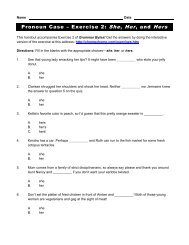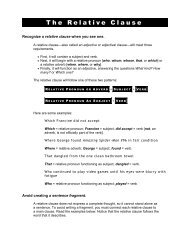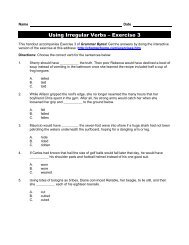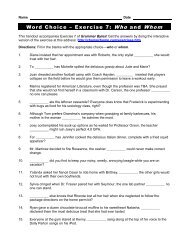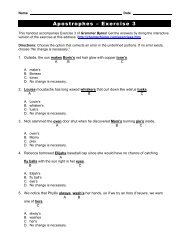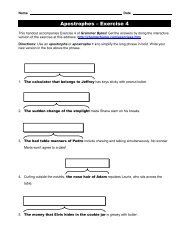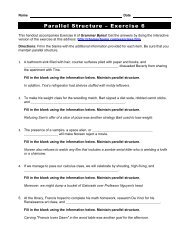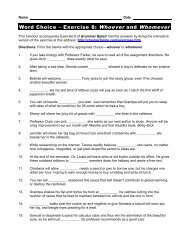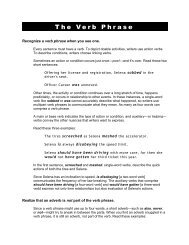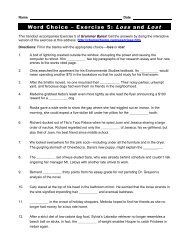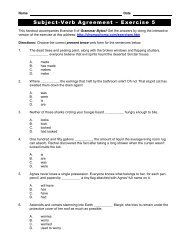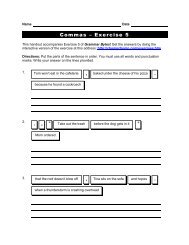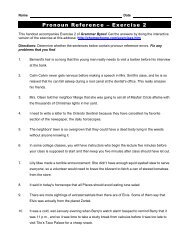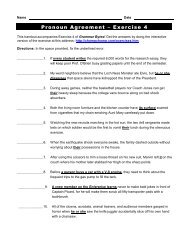The Participle Phrase
The Participle Phrase
The Participle Phrase
You also want an ePaper? Increase the reach of your titles
YUMPU automatically turns print PDFs into web optimized ePapers that Google loves.
Walking on the beach = gerund phrase, the subject of the verb is.Waking to the buzz of the alarm clock , Freddie cursed thearrival of another Monday.Waking to the buzz of the alarm clock = present participle phrase describingthe noun Freddie.Freddie hates waking to the buzz of the alarm clock .Waking to the buzz of the alarm clock = gerund phrase, the direct object of theverb hates.After a long day at school and work, LaShae found her roommateBen eating the last of the leftover pizza.Eating the last of the leftover pizza = present participle phrase describing thenoun Ben.Ben's rudest habit is eating the last of the leftover pizza .Eating the last of the leftover pizza = gerund phrase, the subjectcomplement of the linking verb is.Punctuate a participle phrase correctly.When a participle phrase introduces a main clause, separate the two sentencecomponents with a comma. <strong>The</strong> pattern looks like this:P A R T I C I P L E P H R A S E + , + M A I N C L A U S E .Read this example:Glazed with barbecue sauce, the rack of ribs lay nestled nextto a pile of sweet coleslaw.When a participle phrase concludes a main clause and is describing the word right infront of it, you need no punctuation to connect the two sentence parts. <strong>The</strong> pattern lookslike this:M AIN C L A U S E + Ø + P A R T I C I P L E P H R A S E .Check out this example:Mariah risked petting the pit bull wagging its stub tail.But when a participle phrase concludes a main clause and modifies a word farther up inthe sentence, you will need a comma. <strong>The</strong> pattern looks like this:



